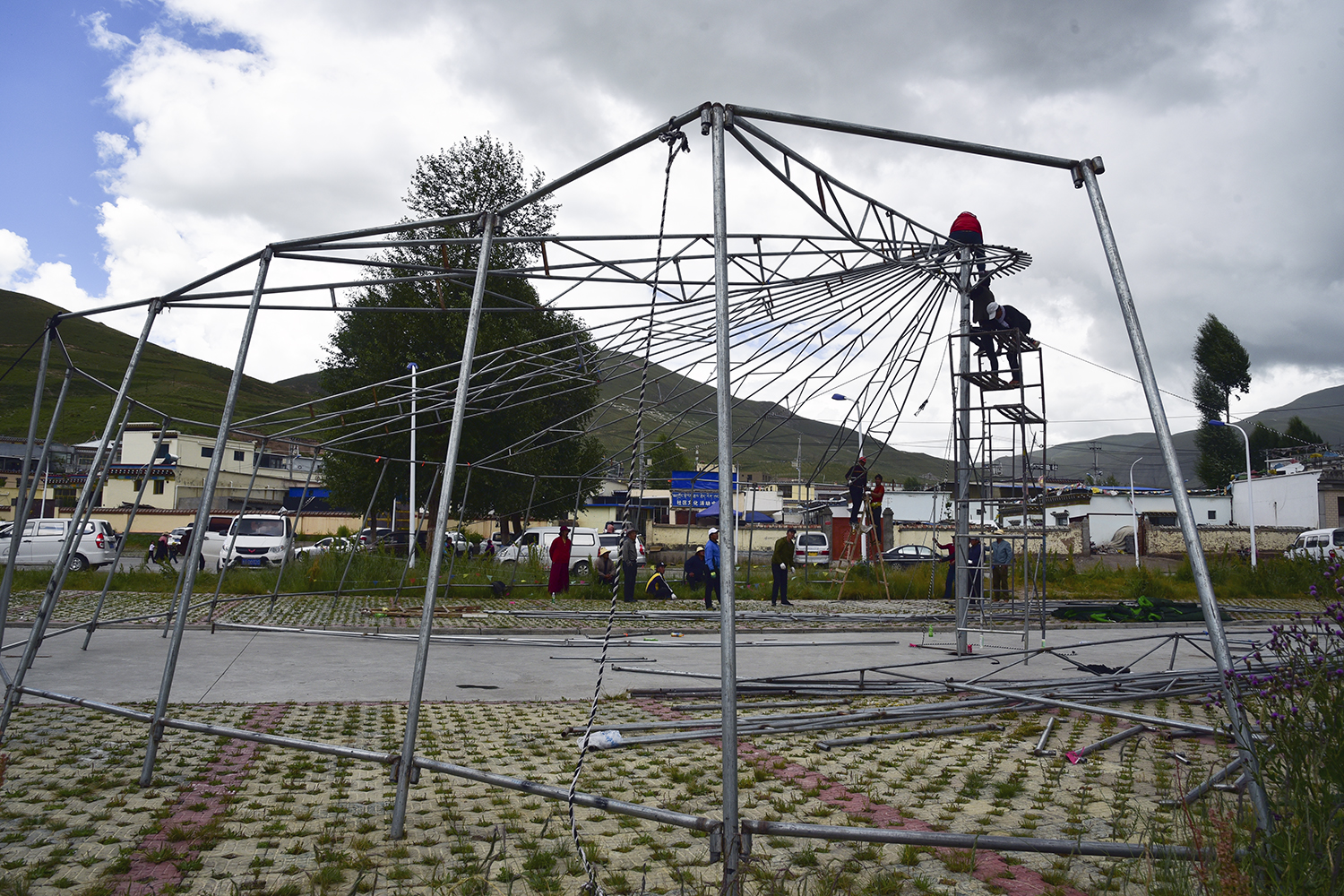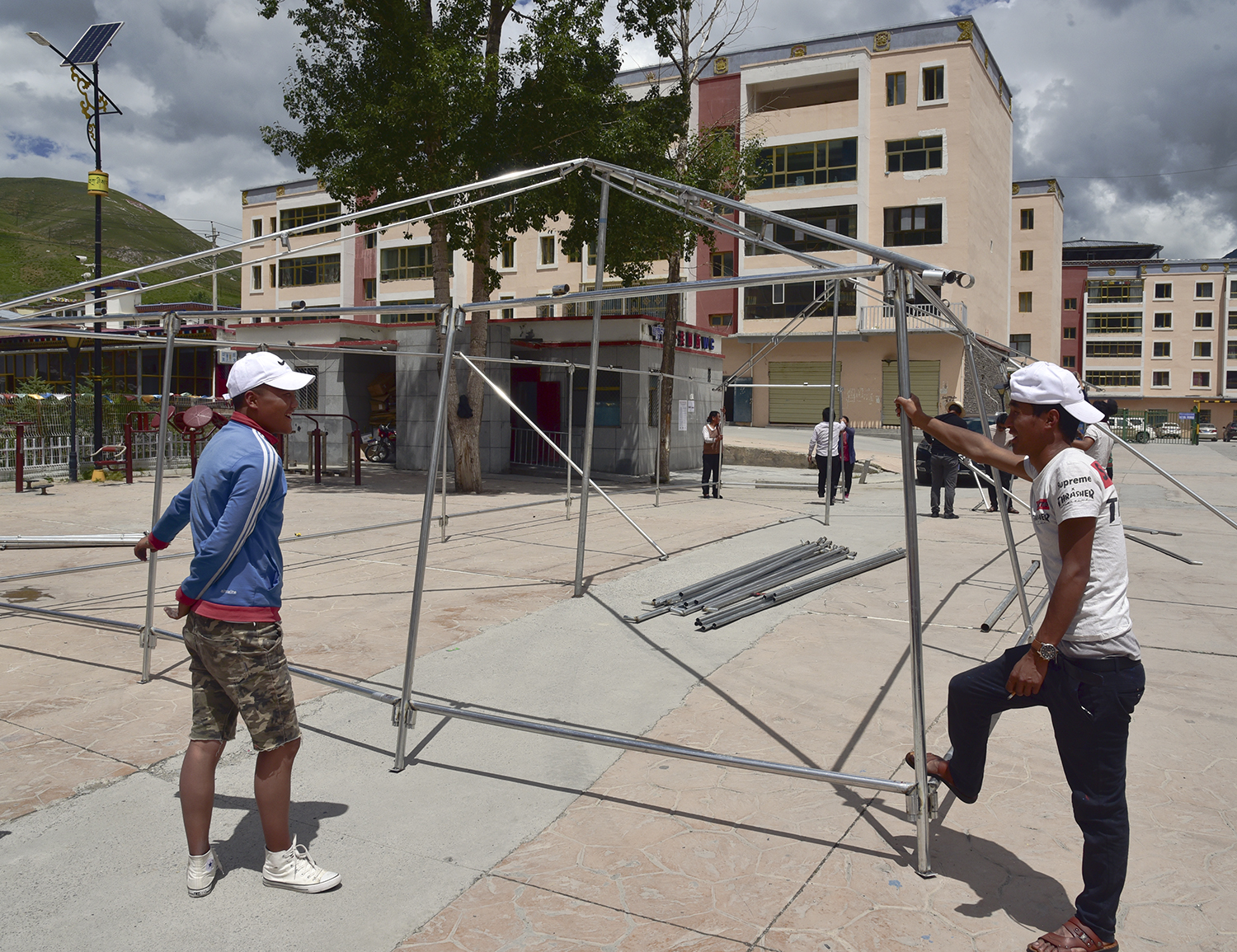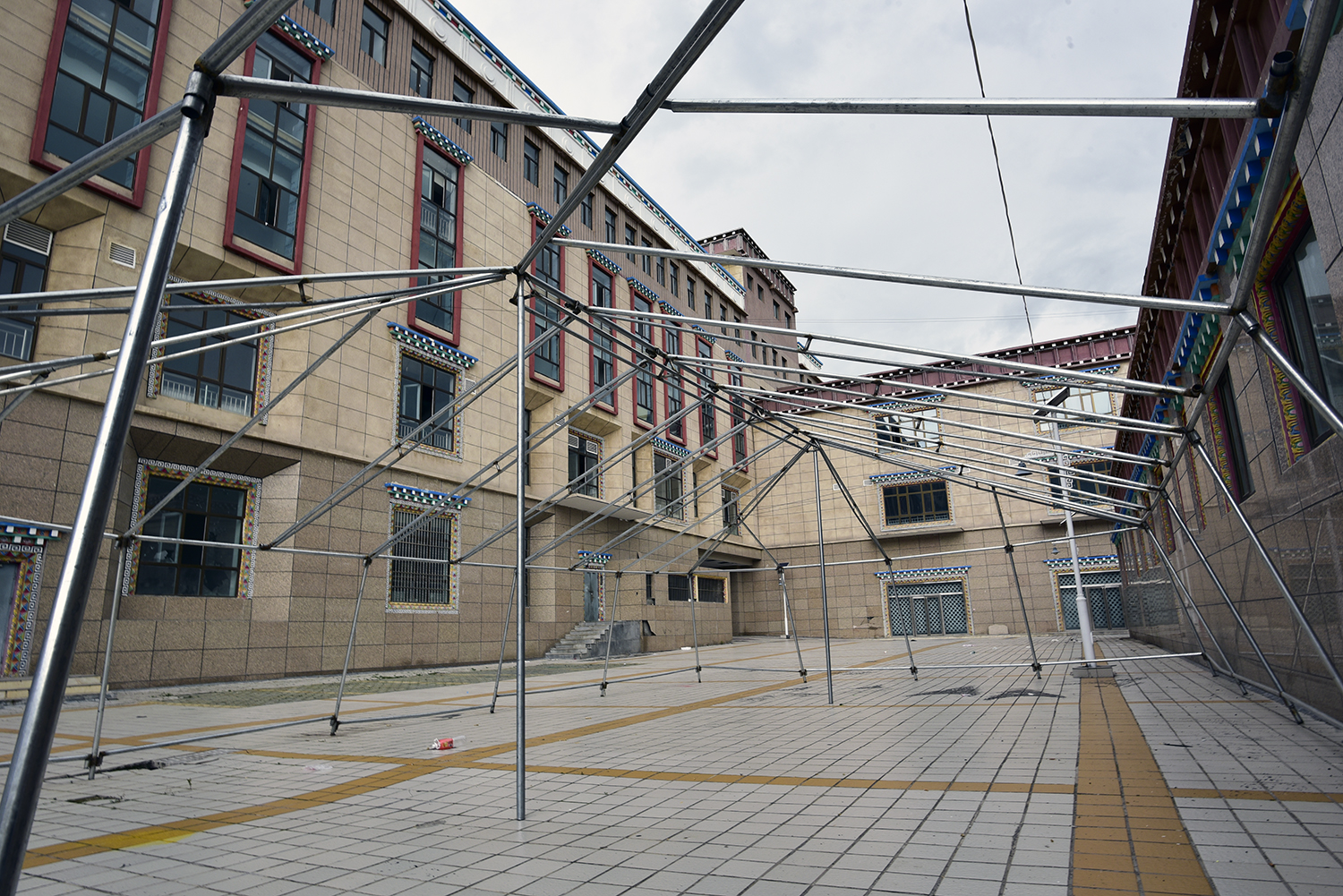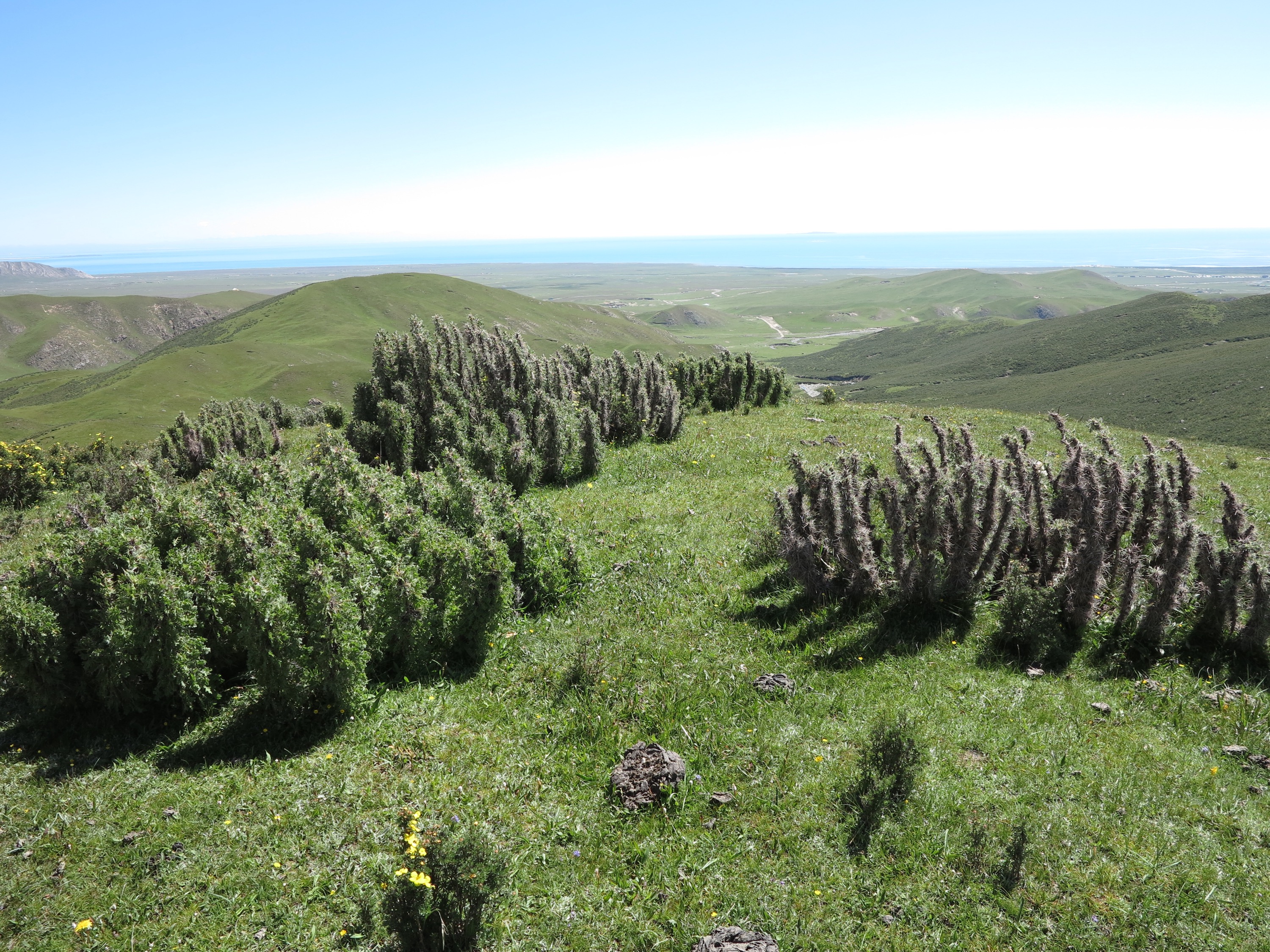
On the road leading out of Yushu there is a plaza where a number of shops specializing in the fabrication of event tent. These tents offer a number of different formats of vaguely rectangular tent structures which are made from fabricated steel pipes, skinned in a heavy vinyl fabric with stenciled symbols, often the 8 auspicious buddhist symbols. I have seen these tents used for recreational purposes, and I have seen these tents used to augment existing architecture. I have seen these used especially in and around festival locations. But there construction is always similar.

There are several elements surrounding their construction that interest me. The format is highly customizable in and around the relative proportion of the different elements. This seems highly strategic in that their product is scalable to the constraining financial factors or intended purpose of the purchaser. The outer decoration may also be specified as they are built of reusable stencils. Hazarding an assumption but I feel there is little risk of decision paralysis on the part of the buyer as there is a general conformity in the way that they are shaped and decorated. They are easily assembled or disassembled and thus they may be fabricated in public space, empty plazas etcetera. The product does not require warehousing, just the reduction, stacking and folding of its constituent parts.


I love the simplicity of the product versus its eventual spatial impact. A business can be built out of a very small space containing a chop saw, welder and a few sewing machines and you are more or less in the festival tent design/build business. Assembly takes place outside (I’m not sure who owns or manages the sidewalks and plazas.) and the work can be assessed and modified on the fly. It should be said that the shops I saw seemed to be focusing on a fairly low level of craft, in that the décor was spray paint over stencils on vinyl fabric. These are practical structures versus more highly crafted versions which would have sewn fabric for decoration on natural fibers.

























